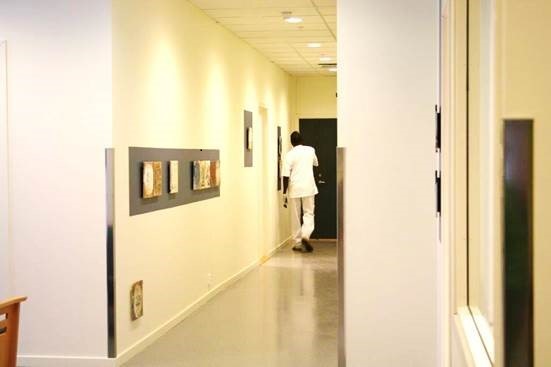Forming Life: Aesthetic Awareness in Mental Health Care
DOI:
https://doi.org/10.7577/if.v2i2.737Sammendrag
Using cross-disciplinary perspectives from artistic research, aesthetic theory, and mental health care, this article discusses qualities in sensuous surroundings in mental health facilities. Although the background for the article is in the increased awareness in aesthetic research concerning sensuous surroundings and their connection to health and well-being, this aesthetic research is only reflected to a small extent in research on mental health care surroundings. A further development of these perspectives is suggested in this article by introducing the concept of life forms from the art theorist Nicolas Bourriaud and the concepts of presentation and perception in theatrical communication from theatre researcher Willmar Sauter. These theories are discussed and exemplified on the basis of data from two mental health care wards: one from a psychogeriatric ward and the other from a polyclinic for eating disorders. Some essential qualities identified in the examples were that aesthetic environment and activity could be seen as formative to the “inner landscape”, and that different forms of sensuous activation and interaction could help patients escape communicative isolation. It is further demonstrated how participatory strategies can challenge artistic practice and that art can contribute to a health promoting and communicative space in mental health care. In the discussion section, it is argued that an activating, and possibly empowering, environment can be created through an increased awareness of the aesthetic strategies used in health care institutions. The study seeks to contribute to knowledge transfer in artistic practice and healthcare practice, as a part of a cross-disciplinary art didactic discourse, which intends to address specific societal challenges.

Nedlastinger
Publisert
Hvordan referere
Utgave
Seksjon
Lisens
Forfattere som publiserer med dette tidsskriftet må være enige i følgende vilkår:
a) Forfattere beholder opphavsrett, men gir tidsskriftet rett til første publikasjon med arbeidet, samtidig som artikkelen er lisensiert under en Creative Commons Attribution-lisens som tillater andre å dele arbeidet med en anerkjennelse og referanse til forfatterskap og første publikasjon i dette tidsskriftet.
b) Forfattere må ikke inngå separate, ytterligere kontraktsmessige ordninger for eksklusiv distribusjon av artikkelens publiserte versjon av arbeidet (for eksempel legge det til et institusjonelt arkiv eller publisere det i en fagbok), uten referanse en anerkjennelse av hvor artikkelen først ble publisert. Dette gjelder for eksempel artikler som publiseres i Nordisk Barnehageforskning og som senere blir del av et doktorgradsarbeid. Da er det viktig å ha tydelige referanser til hvor og når artikkelen er publisert første gang.
c). Forfattere kan ikke legge inn sine arbeid på nettet eller publisere dem i en doktoravhandling (for eksempel i institusjonelle arkiv eller på en hjemmeside) før eller under innsendings- og fagfellevurderingsprosessen, da dette kan skape uorden i referansesystemet til artikkelen.